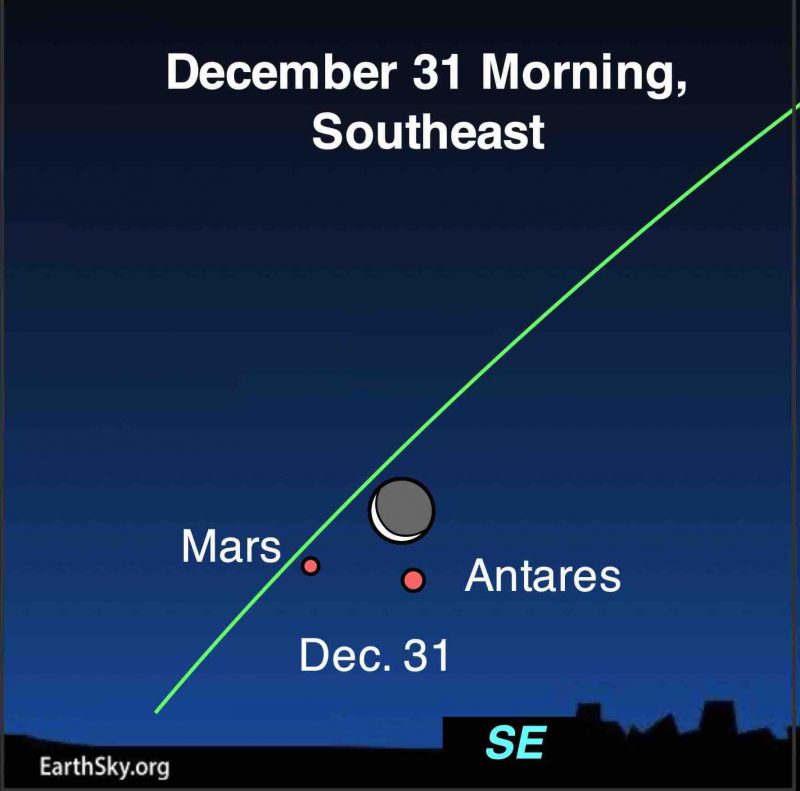
Moon, Mars and Antares
Mars has been traveling behind the sun from Earth for several months. But late December 2021 is the time to start following the red planet as it heads toward its bright appearance a year from now in December 2022. Mars should be just visible, with difficulty, in the direction of sunrise, before the sun comes up, in the last day or so of 2021. The thin waning crescent moon will aid in your discovery of Mars on December 31, the final morning of 2021. Plus you’ll see a second red starlike object. Don’t be fooled! That’s not Mars, but a true star, called Antares, the brightest star in the constellation Scorpius the Scorpion.
Antares will be the red object below Mars on the morning of December 31, as seen from Northern Hemisphere locations. Check Stellarium for the view from the Southern Hemisphere, where viewers will see this event at a different angle with respect to the horizon. From the southern part of Earth’s globe, Mars will lie closer to the horizon than Antares, while the moon will hang just to the left of Antares. No matter. The trio will still be close and a sight to see as the year ends.
Mistaking Antares for Mars and vice-versa
Because of its red tint, Antares is sometimes mistaken for Mars, the red planet. In fact, the name Antares stems from ancient Greek roots meaning “rival to Ares.” Ares was the Greek name for the Roman Mars, the god of war. Antares got this name because its reddish color can be similar to that of Mars.
And sometimes Mars can outshine Antares! But not so in late 2021. Mars – just returning from its sojourn behind the sun as seen from Earth – is at its faintest from our earthly perspective now. It’s far across the solar system from us, about as far as it can be and still be visible. In late December 2021, Mars shines at about magnitude +1.5. Antares is slightly brighter at about magnitude +1.
Start watching before December 31
These early-morning sightings – so near the sun – can be tricky. If you look too early, Mars and Antares won’t have risen yet. If you look too late, bright twilight will drown Mars and Antares from view. So we advise you to start watching for Mars several days prior to December 31.
Look toward the sunrise direction as twilight is beginning to lighten the sky. The pretty crescent moon, full with earthshine, will above the horizon, near Mars, on December 31. And Antares will be there, too, ringing in the new year by forming an intriguing celestial triangle. Although we hope you’ll be able to see them using just your eyes, this trio is best seen in binoculars.
Bottom line: Start watching a few days before December 31, 2021, to see if you can pick up the red planet Mars and red star Antares. On December 31, the waning crescent moon will join the show.











